Experiencing sunrise Yosemite is an unforgettable way to begin your day immersed in one of America’s most iconic landscapes. As the early light spreads across granite cliffs, meadows, and waterfalls, the park transforms into a serene, glowing masterpiece. Whether you’re a photographer, hiker, or first-time visitor, catching a sunrise Yosemite moment offers tranquility, stunning visuals, and a chance to beat the crowds. This guide of National Park Shops highlights the best sunrise Yosemite viewpoints, preparation tips, and etiquette for a peaceful and memorable experience.
Why Sunrise in Yosemite is Special
Sunrise Yosemite holds a kind of magic that even seasoned travelers find breathtaking. The early morning glow casts long shadows and warms the rugged terrain, revealing a side of the park that feels untouched and new. Compared to the busier midday hours, sunrise Yosemite moments offer unmatched peace and the rare opportunity to hear the sounds of nature uninterrupted.
Photographers love sunrise Yosemite for its golden light, often called the “magic hour,” which brings out vibrant hues and rich contrasts on Yosemite’s iconic granite faces. For hikers and nature enthusiasts, early mornings also mean cooler temperatures and a better chance of spotting wildlife like deer, foxes, or even black bears beginning their day. Planning to witness a sunrise Yosemite experience elevates any visit from ordinary to extraordinary.
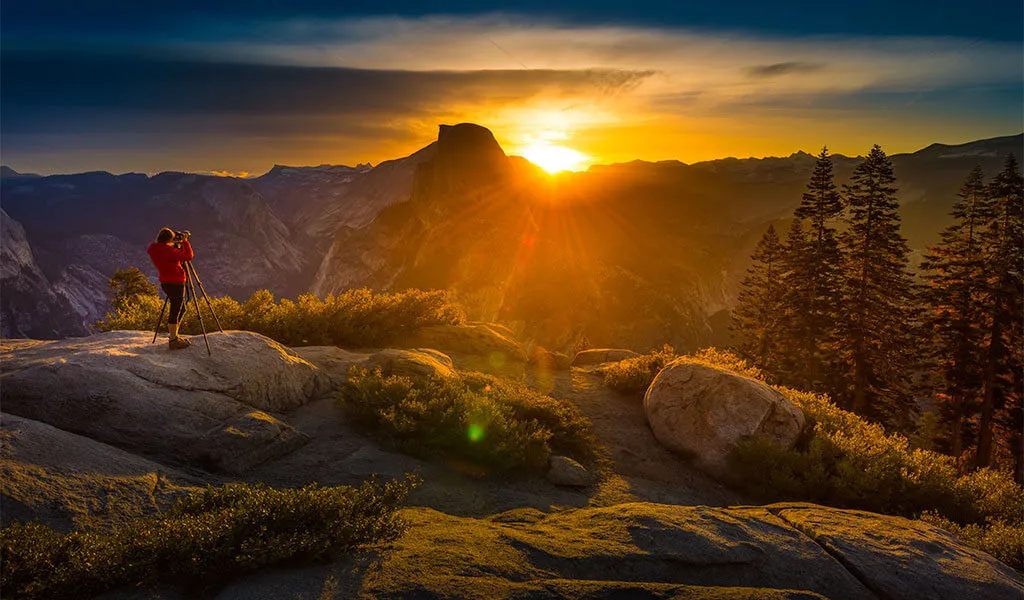
Top Sunrise Viewpoints in Yosemite
Yosemite is filled with remarkable viewpoints, but a few stand out as the absolute best for sunrise Yosemite viewing. From sweeping valley vistas to high alpine overlooks, these spots showcase the park’s grandeur in the soft morning light.
Tunnel View
Tunnel View is one of the most iconic and easily recognized viewpoints in Yosemite National Park, offering one of the most picturesque sunrise Yosemite experiences available. The overlook frames a breathtaking panorama that includes El Capitan standing tall to the left, Bridalveil Fall cascading to the right, and the distant Half Dome basking in the glow of the rising sun. As the light changes minute by minute, it paints the valley in shifting tones of pink, gold, and lavender, creating a mesmerizing backdrop for both amateur and professional photographers alike. Arriving at Tunnel View 20 to 30 minutes before sunrise Yosemite begins ensures you’ll secure a front-row vantage point for the best photos and views.
Accessible in all seasons via Wawona Road, Tunnel View is a convenient sunrise Yosemite option for travelers with limited time who still want maximum visual impact. Parking is usually available at the overlook, though it can fill up during peak travel periods. It’s a great choice for those who prefer a no-hike experience, making it suitable for families, seniors, or anyone wanting to witness the grandeur of sunrise Yosemite without physical exertion. Many guided tours also include Tunnel View as a sunrise stop, and booking through providers often comes with bonus perks such as breakfast vouchers or photography assistance.
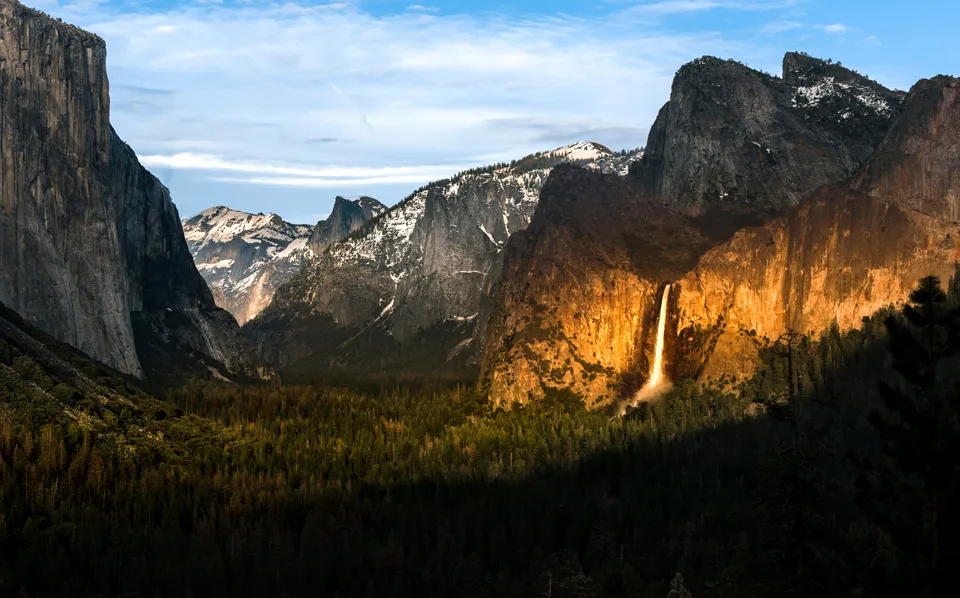
Glacier Point
Glacier Point delivers one of the most dramatic and awe-inspiring sunrise Yosemite experiences, offering an expansive vista that spans Half Dome, Nevada Fall, Vernal Fall, and the rugged ridges of the eastern Sierra Nevada. Due to its high elevation at over 7,200 feet and completely unobstructed eastern view, Glacier Point is among the first places in the park to greet the morning light. As the sun rises, the granite peaks begin to glow with pink, orange, and gold hues, while the valleys remain cloaked in morning mist, a sight that feels like a living painting unfolding in real time. This view is not just stunning; it also provides a rare photographic opportunity to capture Yosemite’s iconic landmarks under perfect golden-hour conditions.
Glacier Point is only accessible during the warmer months, typically from late spring to mid-fall, depending on snowfall. To fully experience a sunrise Yosemite moment from this location, visitors must depart well before dawn – ideally around 4 to 4:30 a.m. – or consider staying overnight at nearby campgrounds or lodges. The road to Glacier Point winds up the mountain with occasional pullouts for early glimpses of the horizon.
>> Read More: 15 Best Yosemite National Park Hiking Trails: Check Map
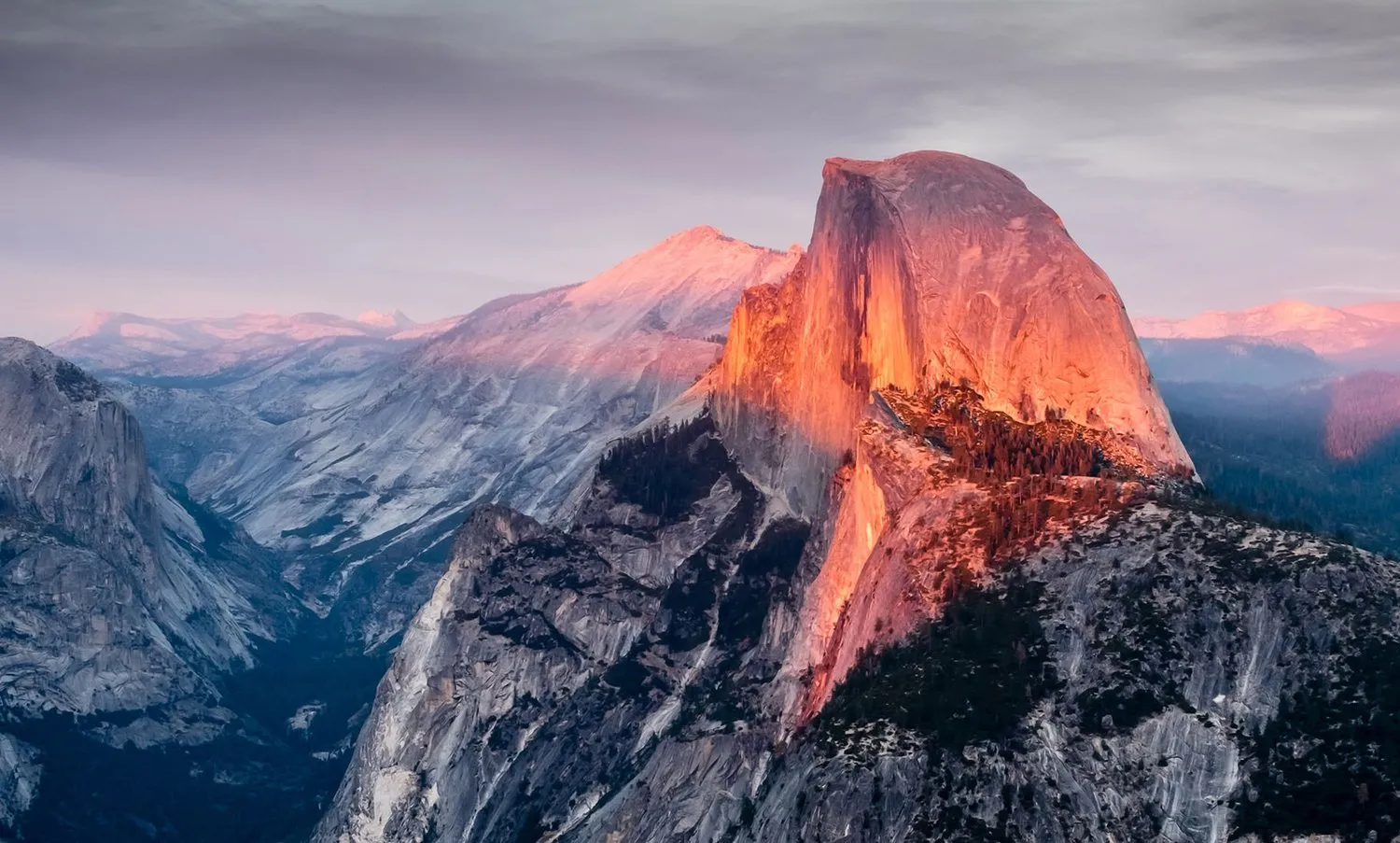
Sentinel Dome
For those looking to pair sunrise Yosemite views with an invigorating yet manageable hike, Sentinel Dome is a top-tier choice. The 2.2-mile round-trip trail offers a gradual climb that rewards hikers with unobstructed, panoramic vistas at the summit. Arriving at the dome in time for sunrise Yosemite provides an awe-inspiring 360-degree view of Yosemite’s most iconic landmarks awakening in the early light, including Half Dome, Yosemite Falls, El Capitan, and even distant Sierra Nevada peaks shimmering on the horizon.
Because the trailhead is located along Glacier Point Road, accessibility is seasonal and typically limited to late spring through early fall. It’s advisable to begin the hike with plenty of time to ascend safely in the twilight, ideally with a headlamp. This setting is a favorite among photographers and landscape lovers seeking solitude and dramatic lighting.
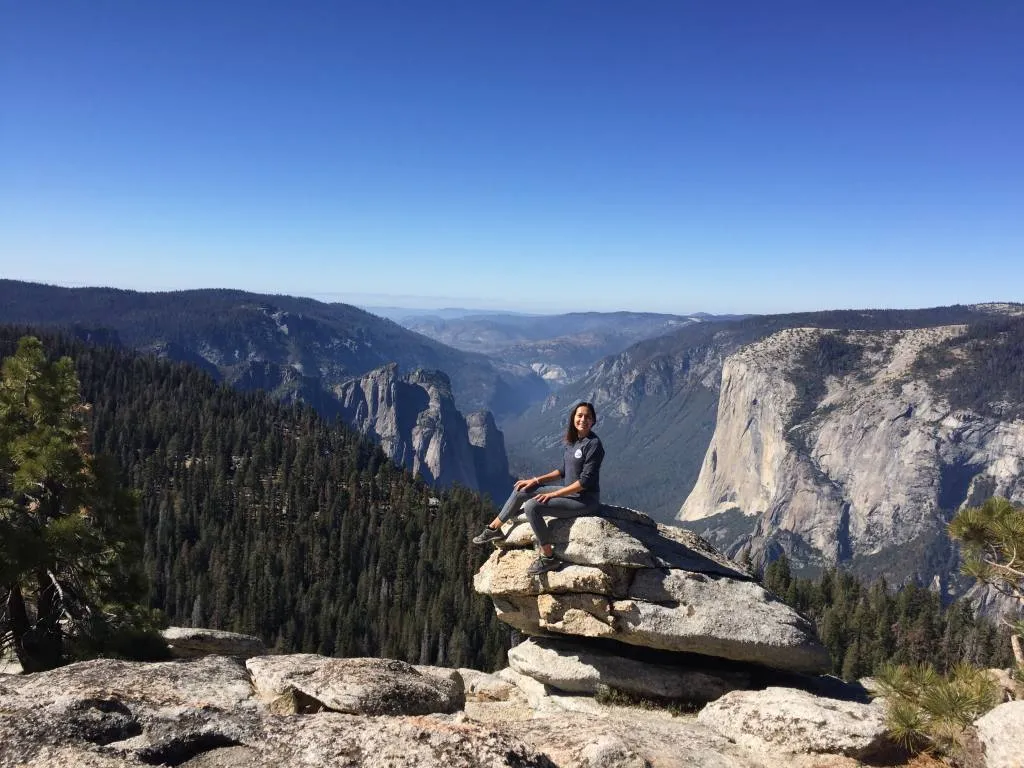
Valley View & Sentinel Bridge
Closer to Yosemite Valley, both Valley View and Sentinel Bridge provide easily accessible options for a more relaxed sunrise Yosemite experience. Valley View, as its name suggests, opens up to the Merced River with reflections of El Capitan and Cathedral Rocks. The morning light creates mirror-like effects on the water, perfect for photography.
Sentinel Bridge is another stunning spot, offering a direct line of sight to Half Dome with the Merced River in the foreground. Both of these sites allow for spontaneous sunrise Yosemite moments and are great for families or travelers not wanting to venture far before dawn. Many Yosemite hotel provide early breakfast boxes for sunrise-goers, enhancing your morning outing.
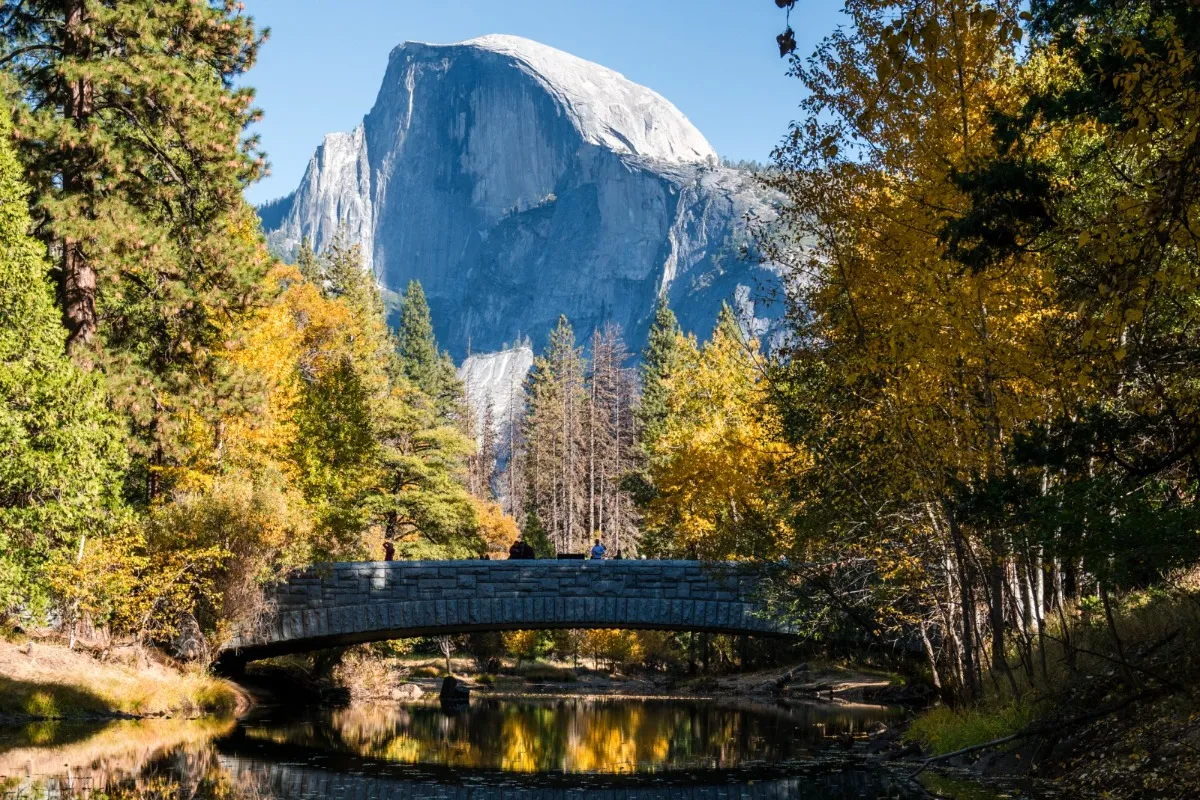
Vista Point on Big Oak Flat Road
Vista Point on Big Oak Flat Road is one of those magical roadside stops in Yosemite that you’ll be glad you didn’t skip. Located along the western approach to Yosemite Valley, this scenic pullout offers a breathtaking preview of what’s to come, wide-open views of the Sierra Nevada, deep-cut canyons, and forested ridgelines that stretch endlessly into the horizon. It’s the kind of view that makes you instinctively reach for your camera (or just pause in awe).
Park experts and travel guides often recommend this spot not only for its panoramic beauty but also for its strategic value. As one of the few safe places to pull over and take in the scenery on the winding Big Oak Flat Road, Vista Point gives you a chance to reset, acclimate to the altitude, and mentally prepare for the grandeur of Yosemite Valley. It’s a smart spot to stretch your legs, catch your breath, and let the anticipation build, especially if you're traveling with family or first-time visitors.
But what really makes Vista Point special is how it eases you into the Yosemite experience. It’s a gentle reminder of just how massive and awe-inspiring the park is, even before you’ve reached its most iconic sights. Whether you’re a seasoned hiker, a casual road tripper, or a photographer chasing light, Vista Point is a worthwhile pause, beautiful, peaceful, and perfectly placed.
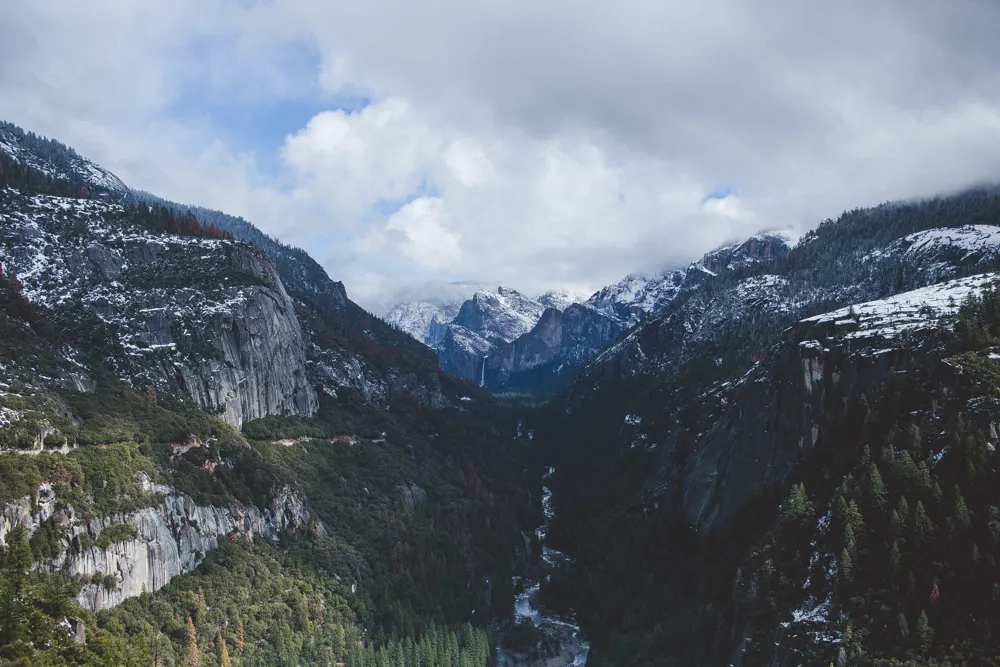
Tips to Prepare for Sunrise Yosemite
- Dress in Layers: Early morning temperatures in Yosemite can be surprisingly cold, even in summer. Wear thermal layers, gloves, a hat, and a wind-resistant jacket to stay warm as you wait for the sunrise Yosemite spectacle.
- Check the Weather: Review the forecast the night before. Cloud cover, fog, or unexpected rain can affect visibility and overall comfort during your sunrise Yosemite experience.
- Pack Essentials: Carry a flashlight or headlamp, especially if you’ll be hiking to your viewing location in the dark. Also bring a fully charged phone, snacks, water bottle, and a small first-aid kit.
- Arrive Early: Plan to get to your spot at least 30 minutes before sunrise Yosemite begins. This gives you time to find parking, settle in, and enjoy the changing light.
- Use Sunrise Kits: Many outdoor gear brands offer curated sunrise Yosemite packs. Look for options that include insulated coffee thermoses, portable camp stools, thermal blankets, and trail maps for a comfortable and prepared outing.
Safety and Etiquette at Sunrise Yosemite
Safety and respect are essential elements of any sunrise Yosemite adventure. Early mornings in the park can be both breathtaking and hazardous if you’re not prepared. To help you stay safe and respectful while enjoying the experience, here are the most important best practices to follow:
- Watch Your Step: Use a headlamp or flashlight to navigate rocky or uneven terrain in the dark. Stick to designated trails to prevent injuries and avoid trampling sensitive areas.
- Drive with Caution: If driving to a viewpoint, beware of icy or damp roads, especially during spring and fall. Always park only in marked pullouts to prevent citations and ensure your vehicle is out of the way of others.
- Preserve the Atmosphere: Keep voices low, use red lights or dim settings on your headlamps, and avoid playing music. The calm and stillness of a sunrise Yosemite setting is part of what makes the experience so powerful.
- Respect Wildlife: Sunrise hours are often when wildlife is most active. Maintain a respectful distance and avoid startling animals by staying quiet and still.
Conclusion
Experiencing sunrise Yosemite is more than a photo opportunity, it’s a connection to nature at its most peaceful and awe-inspiring. From the grandeur of Glacier Point to the tranquility of Valley View, there’s a perfect sunrise Yosemite spot for every type of traveler. Plan ahead, respect the park, and savor the beauty that unfolds each morning in this world-renowned destination.
>> Read More:
- Yosemite National Park Weather: Monthly Suggestions
- Closest Airports To Yosemite National Park: Which is Nearest?
- Road Trip San Francisco To Yosemite National Park: Things To Note

